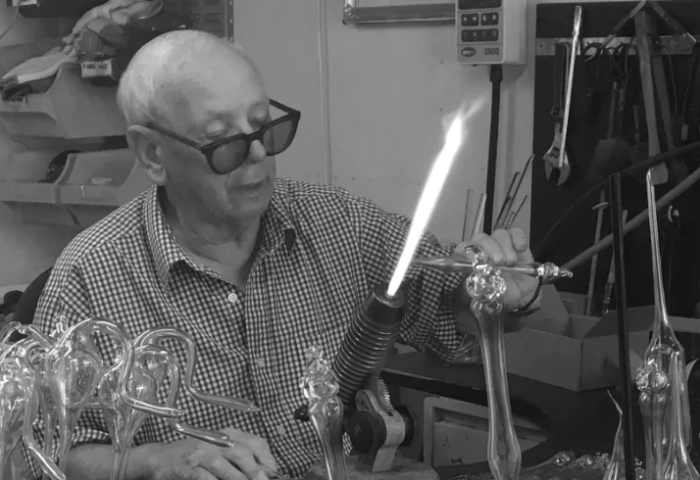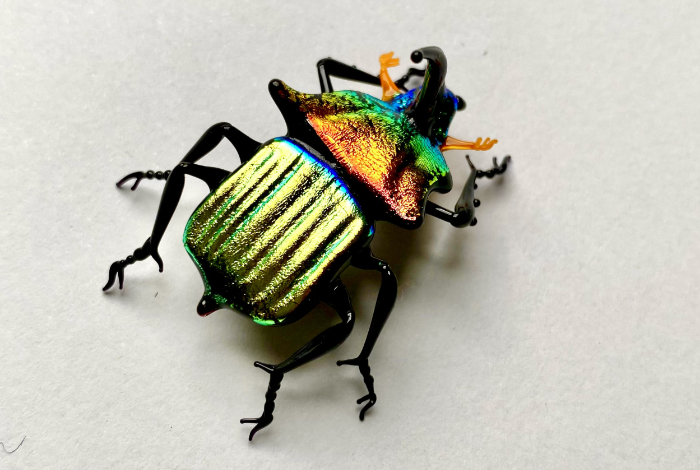
Feed your imagination
Ginny Ruffner’s ‘anything is possible’ attitude has led her to use many different media and technologies in her art and public installations. Her recent work features Augmented Reality to help the viewer interact with the display. Linda Banks, Glass Network digital’s editor, finds out more.
You are a respected and long-established artist who works with a variety of different media. What led you to start working with glass?
As a painter in graduate school, I was studying Marcel Duchamp’s artwork on glass panels, entitled ‘The Bride Stripped Bare by her Bachelors, Even’ (also known as ‘The Large Glass’). It is such an evocative, mysterious and inspiring piece of art that I was moved to investigate working with glass.
Can you tell us something about how you developed your pioneering lampworking methods? How have they evolved?
In the early 1970s I was introduced to lampworked borosilicate glass. I realised that lampworked glass had a lot of undeveloped potential, both due to its underutilised physical properties, and its history. I had so many ideas of what could be created with this medium, but no skill to realise any of them.
I managed to secure a position as an apprentice glassblower. My aesthetic evolved in tandem with my lampworking skill. I wanted to create structures that had balance, strong construction values and visual ‘flow’. Also, I wanted to try merging lampworking with painting skills to create sculpture that had more narrative content.
My belief that anything is possible has propelled me to try many different ways of working with many different media through the years.
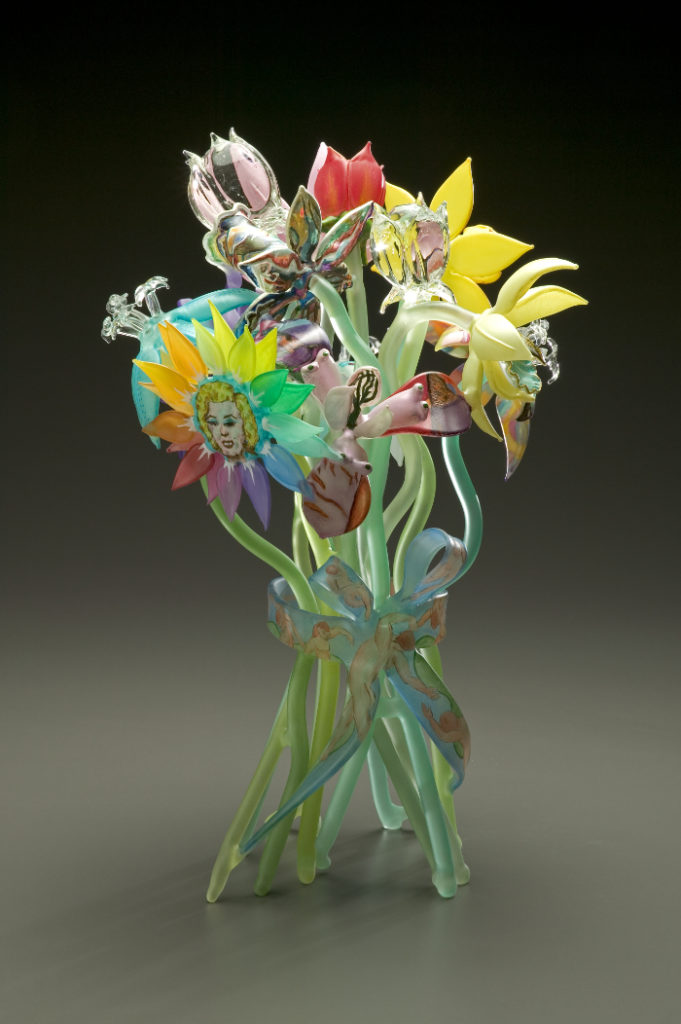
Do you draw your designs out or dive straight in with the materials?
Both.
What is your favourite tool or piece of equipment and why?
A pencil is my favourite, because you can record thoughts and ideas in a way that they can be recreated in your mind later.
Your glass sculptures are bright and bold. What message do you want to covey to your audience through your intricate work?
I want everyone to continue to be aware of beauty.
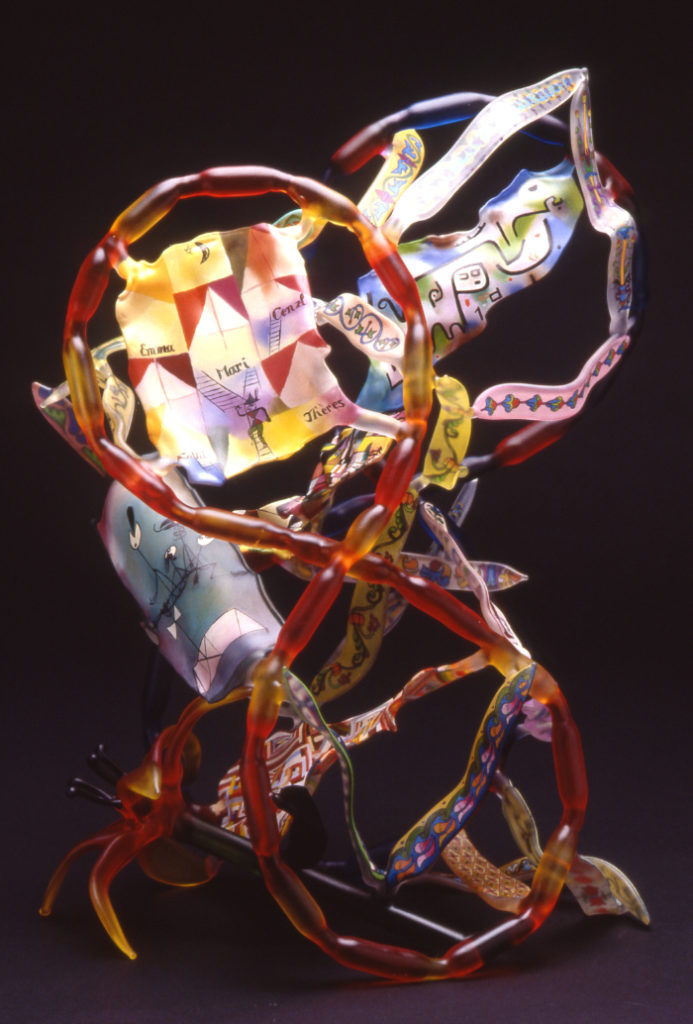
You push the boundaries of what contemporary craft means through incorporating the latest technologies in your installations. Can you tell us why and how you used Augmented Reality in your ‘Alternative Mythologies’ and ‘Reforestation of the Imagination’ works?
Augmented Reality (AR) is a new way of layering the art experience; one that provokes the imagination. This is always a goal of my work. AR requires some action of the viewer (to enable deployment), thereby making the art experience one of interaction and viewer intention.

Do you have a favourite piece you have made? Why is it your favourite?
Actually I have two:
First, ‘The Urban Garden’. This is a 30-foot high kinetic water feature in downtown Seattle in the USA. It is a favourite because of its scale and its location. It is a 30-foot tall bouquet of flowers in a pot. The flowers move and the red watering can tips and waters the pot every 15 minutes.
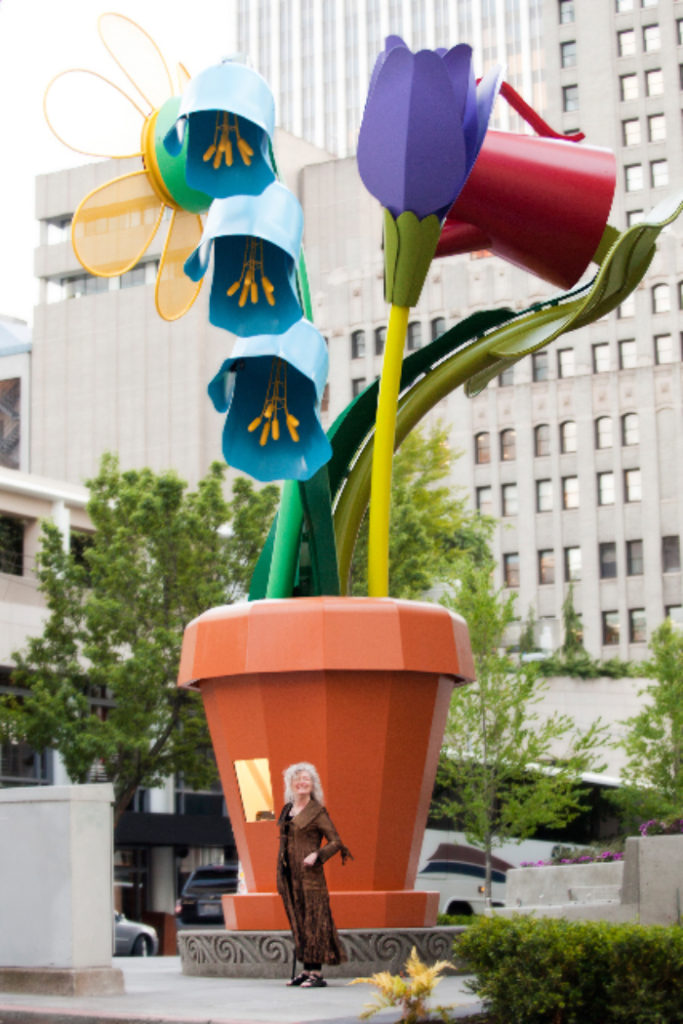
The second is ‘Mind Garden’. This was an installation at the Seattle Art Museum that included 30,000 freeze-dried roses and several large steel and glass sculptures. It is a favourite because it smelled great and was referential to the beautiful garden that is one’s mind.
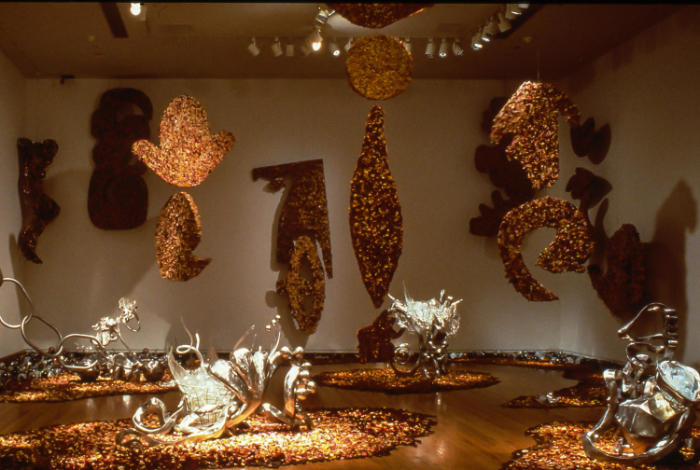
What direction will your art take next?
Who knows? Probably more tech – tech that doesn’t exist yet.
Where do you show and sell your work?
I usually sell my glass work at Austin Art Projects in Palm Desert, California. Typically, my work is shown at museums or in permanent public art settings.
Do you have a career highlight?
It is probably the ‘Reforestation of the Imagination’ (ROTI) exhibition at the Smithsonian in 2018. It is currently on a national tour.
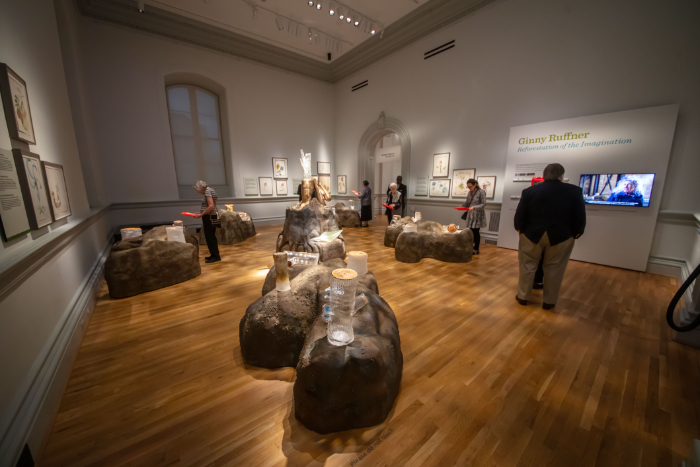
ROTI combines traditional sculpture with AR. By using technology to overlay digital information onto sculptural objects, two disparate environments are portrayed.
The initial environment consists of five barren land masses which support the colourless glass stumps. Apart from the painted shelf, mushrooms and painted tree rings on the stumps and logs, the scene is colourless. The five land masses surround a sixth rocky outcropping with a beautifully grotesque bronze and fibreglass tree. This central tree, made of various materials (fibreglass, bronze, plastic) that have survived this devastation, is returning to a familiar canopy shape.
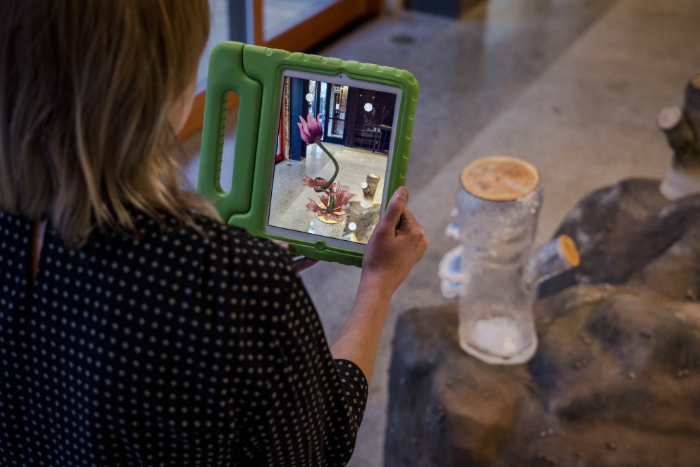
At first glance, the devastated landscape appears to be barren. Yet, upon viewing the tree rings aided by AR technology, a second environment is revealed. Plants appear (both fruit and flowers) which have evolved from existing flora. They have developed dramatic and beautiful appendages and the skills necessary to adapt and flourish in this new, radically different environment. From accessing nutrients in ways that symbiotically improve their surrounding conditions, to developing new protections from new threats, these adaptations are unexpected, beautiful and optimistic.
This is nature reimagining itself. The imagination can’t be exterminated. It just recreates itself.
Who or what inspires you?
Nature. Thinking. Reading.

About the artist
Seattle-based artist Ginny Ruffner trained at the University of Georgia as a painter, graduating with honours and an MFA in painting.
She has had 88 solo shows, several hundred group shows, and her work is in 55 permanent museum and public collections around the world. Seattle public art installations include a 30-foot tall kinetic water feature downtown and a permanent installation in the Seattle Art Museum’s Olympic Sculpture Park.
Recent Augmented Reality projects include ‘Weston Riff’ at Photo Center NW, ‘Branches’ at Seattle International Film Festival and ‘Poetic Hybrids’ at Seattle Art Museum.
She has written two books and been the subject of an award winning, full-length documentary titled, ‘A Not So Still Life, the Ginny Ruffner Story’.
Ruffner has lectured and taught extensively and served as an artist-in-residence at schools and universities around the world.
Find out more via her website: https://www.ginnyruffner.com
Main feature image: ‘Giggle Tornado’ (20.75’’ x 20.5’’ x 19.5’’) was created in 2018. Photo: James Harnois.
